John Hutchinson
Limb myology and muscle architecture of the Indian rhinoceros Rhinoceros unicornis and the white rhinoceros Ceratotherium simum (Mammalia: Rhinocerotidae)
Hutchinson, John; Etienne, Cyril; Houssaye, Alexandra
Authors
Cyril Etienne
Alexandra Houssaye
Abstract
Land mammals support and move their body using their musculoskeletal system. Their
musculature usually presents varying adaptations with body mass or mode of locomotion.
Rhinocerotidae is an interesting clade in this regard, as they are heavy animals potentially
reaching three tons but are still capable of adopting a galloping gait. However, their
musculature has been poorly studied. Here we report the dissection of both forelimb and
hindlimb of one neonate and one adult each for two species of rhinoceroses, the Indian
rhinoceros (Rhinoceros unicornis) and the white rhinoceros (Ceratotherium simum). We
show that their muscular organisation is similar to that of their relatives, equids and tapirs,
and that few evolutionary convergences with other heavy mammals (e.g. elephants and
hippopotamuses) are present. Nevertheless, they show clear adaptations to their large
body mass, such as more distal insertions for the protractor and adductor muscles of the
limbs, giving them longer lever arms. The quantitative architecture of rhino muscles is
again reminiscent of that of horses and tapirs, although contrary to horses, the forelimb is
much stronger than the hindlimb, which is likely due to its great role in body mass support.
Muscles involved mainly in counteracting gravity (e.g. serratus ventralis thoracis,
infraspinatus, gastrocnemius, flexores digitorum) usually are highly pennate with short
fascicles facilitating strong joint extension. Muscles involved in propulsion (e.g. gluteal
muscles, gluteobiceps, quadriceps femoris) seem to represent a compromise between a
high maximal isometric force and long fascicles, allowing a reasonably fast and wide
working range. Neonates present higher normalized maximal isometric force than the
adults for almost every muscle, except sometimes for the extensor and propulsor muscles,
which presumably acquire their great force-generating capacity during the growth of the
animal. Our study clarifies the way the muscles of animals of cursorial ancestry can adapt
to support a greater body mass and calls for further investigations in other clades of large
body mass.
Citation
Hutchinson, J., Etienne, C., & Houssaye, A. (2021). Limb myology and muscle architecture of the Indian rhinoceros Rhinoceros unicornis and the white rhinoceros Ceratotherium simum (Mammalia: Rhinocerotidae). PeerJ, https://doi.org/10.7717/peerj.11314
| Journal Article Type | Article |
|---|---|
| Acceptance Date | Mar 30, 2021 |
| Online Publication Date | May 11, 2021 |
| Publication Date | May 11, 2021 |
| Deposit Date | Apr 14, 2021 |
| Publicly Available Date | Dec 20, 2022 |
| Journal | PeerJ |
| Electronic ISSN | 2167-8359 |
| Publisher | PeerJ |
| Peer Reviewed | Peer Reviewed |
| DOI | https://doi.org/10.7717/peerj.11314 |
| Public URL | https://rvc-repository.worktribe.com/output/1443622 |
Files
Etienne 2021- Rhino Limb Myology
(28 Mb)
PDF
Licence
http://creativecommons.org/licenses/by/4.0/
Publisher Licence URL
http://creativecommons.org/licenses/by/4.0/
Version
VoR
You might also like
The evolution of femoral morphology in giant non-avian theropod dinosaurs
(2024)
Journal Article
Estimation of the forces exerted on the limb long bones of a White Rhinoceros
(2024)
Journal Article
Downloadable Citations
About RVC Repository
Administrator e-mail: publicationsrepos@rvc.ac.uk
This application uses the following open-source libraries:
SheetJS Community Edition
Apache License Version 2.0 (http://www.apache.org/licenses/)
PDF.js
Apache License Version 2.0 (http://www.apache.org/licenses/)
Font Awesome
SIL OFL 1.1 (http://scripts.sil.org/OFL)
MIT License (http://opensource.org/licenses/mit-license.html)
CC BY 3.0 ( http://creativecommons.org/licenses/by/3.0/)
Powered by Worktribe © 2025
Advanced Search
